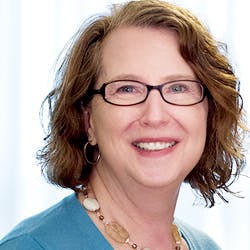SECTION 179 UPDATE:
SOME LAST MINUTE GIFTS FROM CONGRESS
You may want to add David Camp (R-MI) to your 2014 Holiday Card List – or not. He is the sponsor of the "Tax Increase Prevention Act of 2014." The content of this bill, passed by the House earlier this month and the Senate on Tuesday (December 16, 2014) extends retroactively some of the previous tax provisions that had expired at the end of 2013. While the bill includes many extenders, this article focuses on the Section 179 limitation change that allows for immediate expensing of most equipment and the extension of 50% bonus depreciation to all of 2014.
As you may be aware, the amount that qualified for Section 179 current year expensing in 2014 was scheduled to return to $25,000 – the amount that existed in 2003. The new law, which now awaits President Obama's signature (and which he is expected to sign), will increase this significantly, retroactive to the beginning of 2014.
Retroactive provisions
For taxable years beginning after December 31, 2013, the total amount you can elect to deduct under Section 179 cannot exceed $500,000. The expensing provision of Section 179 generally extends to virtually all property other than realty except qualified leasehold improvements (see below). It makes no difference whether it is new or used. The qualified real property (leasehold improvements) deduction is limited to $250,000 and is included as part of the $500,000 maximum.
If the cost of your qualifying Section 179 property in service in a year exceeds, $2,000,000, the amount of the deduction is reduced (but not below zero) by the amount over $2,000,000.
Bonus depreciation is 50% of the cost of the new property. The law permits taxpayers to use Section 179, bonus depreciation, and regular accelerated depreciation all on the same property!
If you have already made your equipment purchases for 2014, you may be the beneficiary of a nice tax reduction surprise when you file your 2014 tax returns – provided that you have successfully navigated the obstacles, listed below.
If you have not yet made 2014 equipment purchases, but are considering doing so, the following obstacles must be overcome:
Obstacle 1 – The property must be qualifying property.
This challenge is fairly easy to overcome. The property must be tangible personal property purchased from a non-related person for business use. Most of the qualifying outlier provisions do not apply to dentistry so I will not discuss them here. There is, however, a leasehold improvement provision that I will discuss in a later section. If you have not yet made the purchase, the biggest hurdle you may face is the provision that the property must be in service by December 31, 2014. Waiting room furniture might be a better choice than a complete computer system replacement. Note that if property is traded in as part of the transaction, only the amount of cash paid is included in the deduction amount.
The qualifying amount for SUV-like vehicles remains at $25,000. If you are considering purchasing an SUV through your practice – don’t. Expensed amounts must be recaptured if the business use falls below 50%. Others may disagree, but I recommend buying the SUV personally and reimbursing yourself from the practice for business miles traveled. It may result in a smaller deduction, but I believe it eliminates an audit red flag.
Obstacle 2 – The basis challenge
If your practice is organized as an S corporation, your Section 179 deduction cannot exceed your basis at the end of 2014. Any excess deduction carries to later years until there is sufficient basis. A detailed discussion of “The B Word” is beyond the scope of this article. If your practice operates as an S corporation and you have never heard the term “basis” it could be because you have sufficient basis and it is therefore not an issue (good for you) or on the other hand, it could be because a component of your activity that should be tracked – is not.
Obstacle 3 – The overall investment limitation
The total expenditure limit for 2014 is $2,000,000. This means that the Section 179 deduction is reduced dollar for dollar by amounts spend in excess of $2,000,000 so that an expenditure of $2,500,000 would result in no Section 179 deduction for 2014. This is not likely to be an obstacle for you.
Obstacle 4 – The taxable income limitation
The deduction for 2014 cannot exceed the taxable income from the active conduct of the trade or business during the year. Included in the definition of taxable income for this purpose is wages earned as an employee. Any amount not deductible due to the taxable income limit carries over to subsequent years.
Obstacle 5 – Another marriage penalty
You and your spouse are treated as one taxpayer for Section 179 purposes regardless of whether you file a separate or a joint return. Certain allocation rules apply if filing separate returns.
Qualified leasehold improvement property
This is leasehold improvement property that is not included in structural components. It includes, for example, interior walls and doors. The carryover of these amounts, if not deductible in the current year, is limited, however, so it is important that you (or your tax preparer) read the fine print. This deduction is not available if you or a related person owns the building.
Bonus Depreciation
Bonus depreciation is 50% of the cost of new property. As long as the property’s use begins with the taxpayer (not used) and there is sufficient basis (see Obstacle 2 above) the amount is deductible in the current year. Obstacles 3, 4 and 5 do not apply. Because of that sometimes bonus depreciation is the better option.
Final Thoughts
This is a great opportunity for the right practices, but be sure to consult your tax advisor before making any decisions. He or she will be able to advise you on the best moves for your situation.
Keep in mind that this is a one year fix only – next year we may be going through this exercise again!








